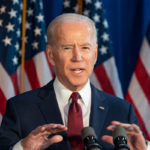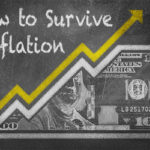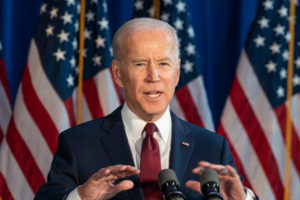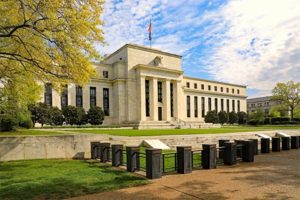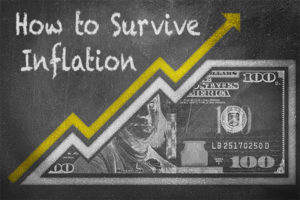Here on the landless side of the fiscal cliff, there’s nothing but the wind. And as every parachutist and cliff diver knows, the wind can be tricky and unpredictable. Just as easily as a sudden untoward gust can slam one into the mountainside, a light zephyr can come along to glide one gently to lower ground.
And now that we’ve all managed a semi-soft landing, due to Congress’ better-late-than-never ratification of fiscal cliff legislation, markets, businesses and taxpayers alike are just now beginning to assess how the financial winds will blow in the New Year’s new economic atmosphere.
Given that Washington had figuratively left everyone up in the air right until the last minute, it is particularly interesting to note that the one industry in America that literally depends upon being up in the air — the wind power business — was put in imminent danger of a steep descent, due to the Dec. 31 expiration of the federal wind production tax credit (PTC).
Happily, the package that Congress passed on New Year’s Day includes a “tax extender” that will cover another year of production tax credits for wind projects that begin construction in 2013.
How the PTC Supports Wind Power
Since the PTC’s creation in the early 1990s, each wind turbine in America connected to the grid and selling the power it generates in the commercial marketplace has been granted a 2.2-cent tax credit for each kilowatt hour of electricity produced over its first 10 years. For a large turbine, that credit can amount to $1 million over a decade.
And that 2.2-cent production tax credit — which can be equal to one-sixth to one-half of the revenue produced by a wind turbine — has been a major factor in helping the domestic wind power industry expand, while also helping to bring down the price of wind-generated electricity to a point where it is competitive with what can be produced by conventional fuels.
With the PTC in place, business has been good. In 2012, land-based wind power accounted for $14 billion in new investment and represented 44 percent of all new electric capacity additions in the United States – more than natural gas.
Today, the country is the world’s top producer of wind power-generated electricity, contributing 27 percent of the planet’s total output. And almost 70 percent of the towers, blades, gears and generators installed at U.S. wind farms come from domestic manufacturers, up from 35 percent in 2005.
Non-Renewal Would Have Devastated the Industry
According to a recent study underwritten by the American Wind Energy Association (AWEA), without a PTC extension, the U.S. wind market would have contracted significantly this year:
- Annual wind farm installations would have declined by 75 percent – from 8 gigawatts (GW) of power in 2012, to 2 GW in 2013.
- Total wind investment would have dropped by two-thirds — from $15.6 billion to $5.5 billion.
- Wind supported jobs would have dropped by 37,000 – from 78,000 to 41,000.
Add this gloomy prediction to the buffeting that American wind companies have suffered over the last two years due to weak electricity demand, cheap natural gas, and the dumping of subsidized materials — like the steel turbine towers imported from China that manufacturers were selling for less than the cost of their production — and the outlook for this alternative energy industry, just at a time when it’s most needed, was not encouraging.
And this was not the first time that dithering in Washington helped bring the industry to its knees: Since the PTC began 20 years ago, it has already expired three times — and each time new wind farm installations fell between 73 and 93 percent, while wind businesses waited uncertainly for its renewal. This year, both Siemens and Vestas, two major wind product manufacturers, cut back production and laid off workers because of the possibility that the PTC would permanently expire.
While the Obama administration requested that Congress extend it, opponents balked, claiming that the $14.7 billion expended so far should have been enough to help the wind industry stand on its own two feet, and that a renewal, which would cost an additional $12.2 billion were it to last for 10 years, would be an unacceptable expense in the current economic climate.
Getting Serious about Alternative Energy
Thankfully, that short-sighted view was far from universal and ultimately did not prevail. Bills calling for a PTC extension had 119 co-sponsors in the House and seven in the Senate, and the legislation was backed by hundreds of groups and associations across the political spectrum, including the U.S. Chamber of Commerce and the National Governors Association, as well as dozens of major newspapers all over the country.
It also appears that Congress learned something from the debacle it created back in the early days of the Reagan administration, when it repealed the Carter-era solar energy tax credits. That myopic move helped cripple the promising domestic solar industry in its infancy, putting us 30 years behind where we could be today in the production of energy from the sun, and way behind nations like Germany and Spain in the creation and distribution of solar power.
With the PTC extension, the wind power industry believes that some 37,000 jobs are safe — at least for another 12 months, when pressure to eliminate the subsidy will renew again on Capitol Hill. But wind power proponents have some good numbers on their side when the arguments recommence.
According to the AWEA study, extending the PTC for four years would help the wind power industry grow to 95,000 jobs by 2016, with a total investment of $16.3 billion for the year. And the Department of Energy (DOE) has estimated that wind power could account for 20 percent of the country’s electricity supply by 2030, supporting half a million American jobs.
Whether or not the full extent of congressional action on New Year’s Day turns out to be a net plus for the nation, one sector of our economy has escaped a wind that could have blown very ill, indeed. And at least for now, the wind energy industry, one that creates power that is clean, cost-efficient and endlessly renewable, has received another breath of life.




